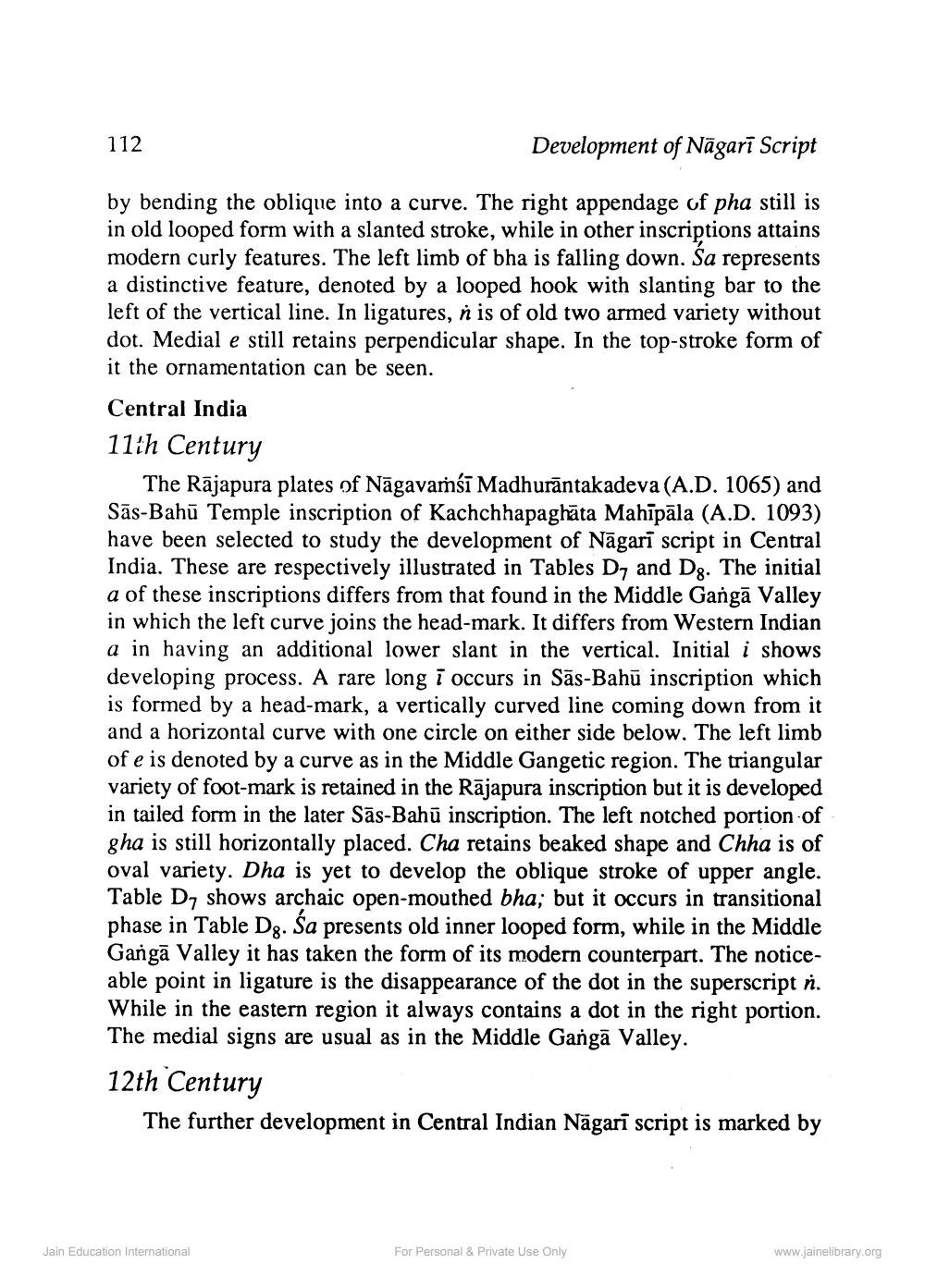________________
112
Development of Nāgarī Script
by bending the oblique into a curve. The right appendage of pha still is in old looped form with a slanted stroke, while in other inscriptions attains modern curly features. The left limb of bha is falling down. Sa represents a distinctive feature, denoted by a looped hook with slanting bar to the left of the vertical line. In ligatures, n is of old two armed variety without dot. Medial e still retains perpendicular shape. In the top-stroke form of it the ornamentation can be seen.
Central India 11th Century
The Rājapura plates of Nāgavamsi Madhurāntakadeva (A.D. 1065) and Sās-Bahū Temple inscription of Kachchhapaghāta Mahīpāla (A.D. 1093) have been selected to study the development of Nāgarī script in Central India. These are respectively illustrated in Tables D, and Dg. The initial a of these inscriptions differs from that found in the Middle Gangā Valley in which the left curve joins the head-mark. It differs from Western Indian a in having an additional lower slant in the vertical. Initial i shows developing process. A rare long 7 occurs in Sās-Bahū inscription which is formed by a head-mark, a vertically curved line coming down from it and a horizontal curve with one circle on either side below. The left limb of e is denoted by a curve as in the Middle Gangetic region. The triangular variety of foot-mark is retained in the Rājapura inscription but it is developed in tailed form in the later Sās-Bahū inscription. The left notched portion of gha is still horizontally placed. Cha retains beaked shape and Chha is of oval variety. Dha is yet to develop the oblique stroke of upper angle. Table D7 shows archaic open-mouthed bha; but it occurs in transitional phase in Table Dg. Sa presents old inner looped form, while in the Middle Gangā Valley it has taken the form of its modern counterpart. The noticeable point in ligature is the disappearance of the dot in the superscript n. While in the eastern region it always contains a dot in the right portion. The medial signs are usual as in the Middle Gangā Valley.
12th Century
The further development in Central Indian Nagari script is marked by
Jain Education International
For Personal & Private Use Only
www.jainelibrary.org




